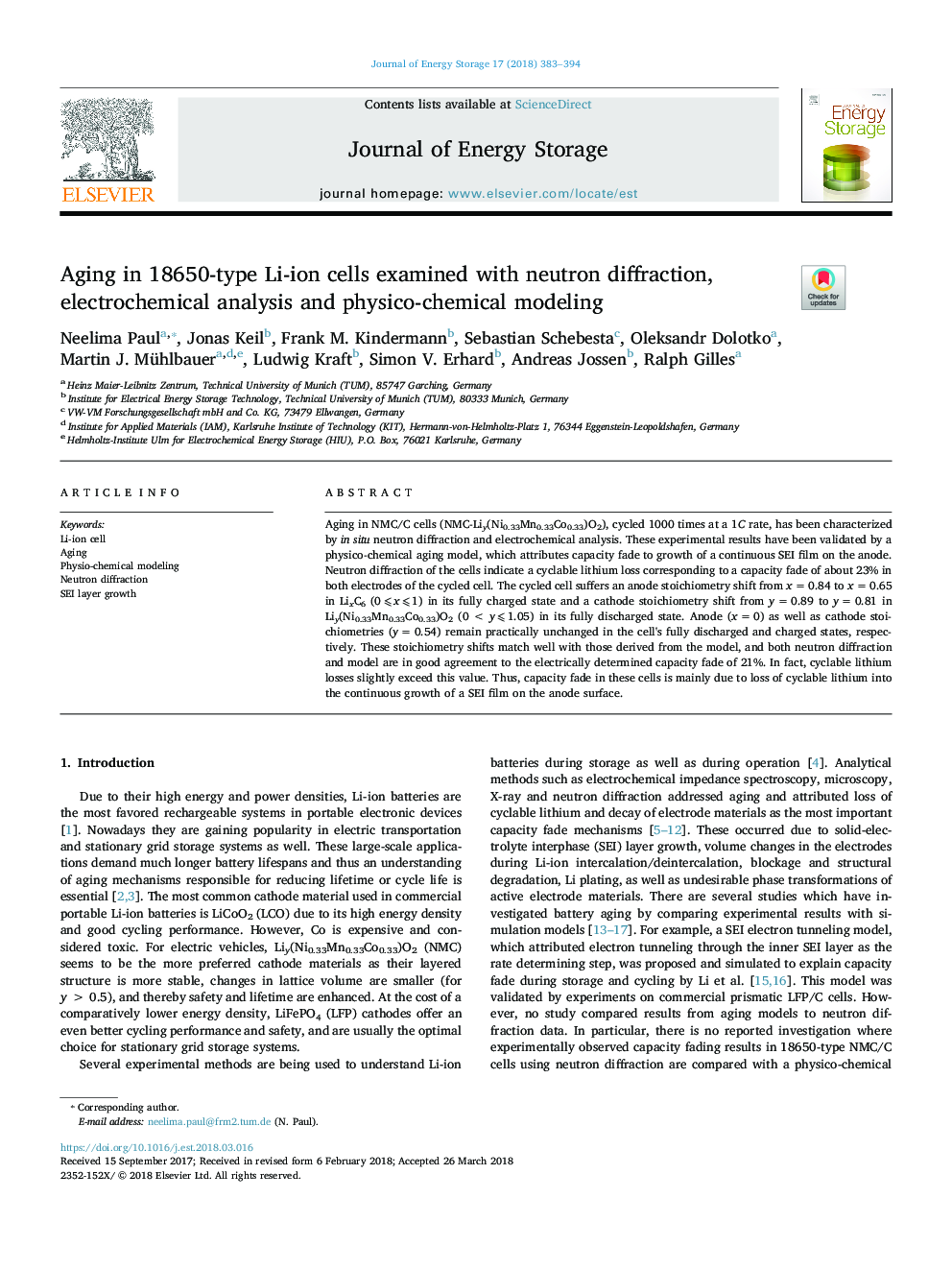| Article ID | Journal | Published Year | Pages | File Type |
|---|---|---|---|---|
| 7540026 | Journal of Energy Storage | 2018 | 12 Pages |
Abstract
Aging in NMC/C cells (NMC-Liy(Ni0.33Mn0.33Co0.33)O2), cycled 1000 times at a 1C rate, has been characterized by in situ neutron diffraction and electrochemical analysis. These experimental results have been validated by a physico-chemical aging model, which attributes capacity fade to growth of a continuous SEI film on the anode. Neutron diffraction of the cells indicate a cyclable lithium loss corresponding to a capacity fade of about 23% in both electrodes of the cycled cell. The cycled cell suffers an anode stoichiometry shift from xâ¯=â¯0.84 to xâ¯=â¯0.65 in LixC6 (0â¯â©½â¯xâ¯â©½â¯1) in its fully charged state and a cathode stoichiometry shift from yâ¯=â¯0.89 to yâ¯=â¯0.81 in Liy(Ni0.33Mn0.33Co0.33)O2 (0â¯<â¯yâ¯â©½â¯1.05) in its fully discharged state. Anode (xâ¯=â¯0) as well as cathode stoichiometries (yâ¯=â¯0.54) remain practically unchanged in the cell's fully discharged and charged states, respectively. These stoichiometry shifts match well with those derived from the model, and both neutron diffraction and model are in good agreement to the electrically determined capacity fade of 21%. In fact, cyclable lithium losses slightly exceed this value. Thus, capacity fade in these cells is mainly due to loss of cyclable lithium into the continuous growth of a SEI film on the anode surface.
Keywords
Related Topics
Physical Sciences and Engineering
Energy
Energy (General)
Authors
Neelima Paul, Jonas Keil, Frank M. Kindermann, Sebastian Schebesta, Oleksandr Dolotko, Martin J. Mühlbauer, Ludwig Kraft, Simon V. Erhard, Andreas Jossen, Ralph Gilles,
